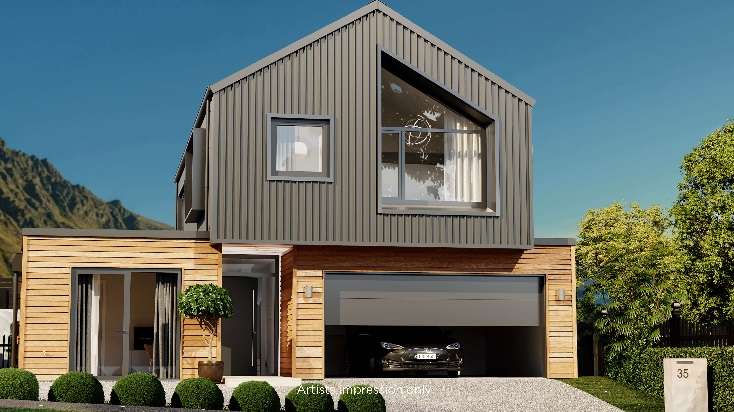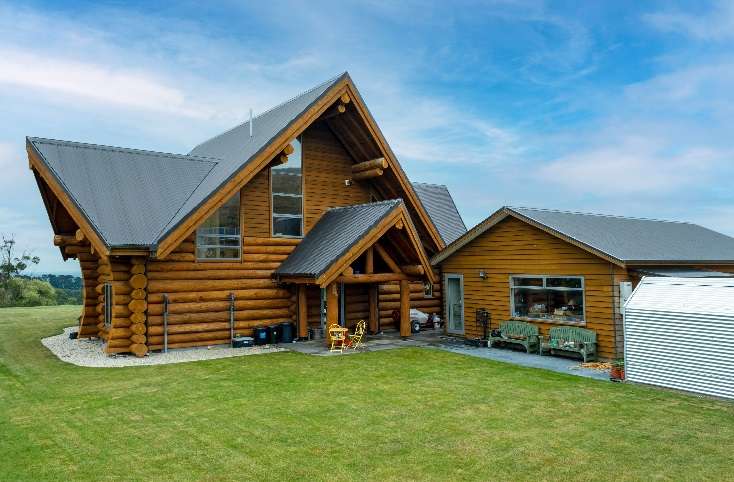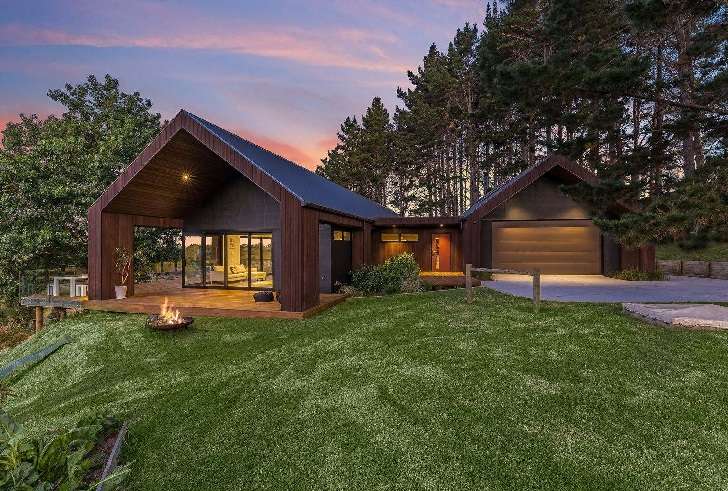New Zealand’s real estate market has become increasingly attuned to green living, with data from OneRoof showing a flurry of homes coming to market with sustainable features.
Analysis of new listings on OneRoof from January 2021 shows an increase in the number of properties that include green words and phrases such as “sustainable”, “Homestar”, “off-grid”, “solar panel” and “battery”.
However, the data also shows New Zealand’s green movement still has a way to go, with sustainable homes representing only a small fraction of the overall residential market.
The data from OneRoof shows a quadrupling of green listings in the second half of 2021, but then a levelling off at around 150 per month – about 2% of all new monthly listings nationwide.
Start your property search
Recent new green listings include an energy-efficient four-bedroom passive house at 123 Valley Road, in Waimauku, Rodney; a 6 Homestar four-bedroom home at 35 Jack Hanley Drive, in Jack’s Point, Queenstown; and an off-grid log cabin at A/107 Horse Gully Road, in Papakaio, Waitaki.
The rise in green listings can also be seen in separate research by Ray White Real Estate. Ray White data analyst William Clark found that Auckland had the highest number of Ray White listings with green keywords, but that Nelson and Bays was the region with biggest share of green homes for sale, at 5.3%.
The Ray White research also found that green listings made up 4.8% of the total market in Northland, and 4.4% in Central Otago/Lakes. At the other end of the scale, the share of new listings in Auckland was 1.9%, and in Southland the share was 1.5%.
The spike in green listings has been partly driven by the big increase in the number of homes being certified under the Homestar and Passive House schemes over the past three years.
But while words and phrases like “solar”, “sustainable” and “double-glazed” may catch the attention of buyers, they don’t necessarily mean a home is sustainable, with the New Zealand Green Building Council (NZGBC) warning that there may be a certain amount of “greenwashing” going on in the market.
Matthew Cutler-Welsh, NZGBC’s business development manager for residential, told OneRoof that for a home to be truly sustainable it needed to be warm, dry, well-ventilated and resource efficient.
Homestar ratings give points for the insulation standards, concrete slab, windows, ventilation, water efficiency, construction waste management, and embodied carbon. A home that gains sufficient credits to meet the rating is a healthy home to live in, said Cutler-Welsh.
The ratings range from 6 Homestar to 10 Homestar, with a 6 Homestar rating the equivalent of standard homes in other OECD countries. If homes built to the New Zealand Building Code were rated, they’d sit around four on the Homestar scale.
Read more:
- Buyers spend close to $8m on new home ... and an extra $3m to protect the view
- Mansion with its own waterfall and 400 tonnes of marble up for grabs
- High stakes real estate gamble in Queenstown
Cutler-Welsh said the NZGBC expected 7000 registrations under the Homestar scheme this year. “We’ve seen quite a dramatic increase in project registrations. It’s really grown exponentially since 2019/2020.”
Much of that growth is being driven by Kāinga Ora, which requires homes built in its master-planned communities to meet Homestar registration standards. That doesn’t just include Kāinga Ora’s social housing. Many of the Homestar-certified homes are sold as KiwiBuild or on the open market.

A "high performing" home for sale at 35 Jack Hanley Drive, at Jack's Point, Queenstown. Photo / Supplied

This off-grid cabin at A/107 Horse Gully Road, in Papakaio, Waitaki, is looking for enquiries over $1.2m. Photo / Supplied
“Kāinga Ora have really committed to Homestar to deliver healthy, efficient homes, because they recognise there’s a lot of benefit to going a little bit beyond some of the bare minimums of the Building Code,” Cutler-Welsh said.
He estimated that around 50-75% of the Homestar registrations were being driven by Kāinga Ora.
Green credentials can have a positive impact on prices. Earlier this year, a near-new sustainable home sold under the hammer for $2.22 million – almost $200,000 above its CV.
The two-bedroom passive house on Christian Road, in Swanson, Auckland, which was marketed by Harcourts agent Celia Challis as a fully “off grid, eco home”.
It was picked up by a local buyer who beat four other parties who had been waiting in the wings with conditional offers.

This off-grid home on Auckland's western fringe sold for $2.22m earlier this year. Photo / Supplied
The vendor, Andrew Duncan, had worked as a contract builder on Homestar homes before building his own 271sqm passive home on 1.76 hectares in the bush.
Challis said at the time that Duncan had “put in three times the amount of insulation the building code requires because he wanted it to be really cool in summer and warm in winter. He also double-framed the house to take on board the extra insulation”.
Duncan and his partner Jesse Chalmers are now planning to build a new off-grid home for their growing family in Cromwell, Central Otago. He told OneRoof that he’s “no crank” but believed that the future of the planet was at stake if the people didn’t start building better.
He said building a sustainable home wasn’t easy but worth the effort. “It makes a better home to live in. There is a sense that I’m not living in something that is a ticking time bomb that’s making the world a worse place.”
- Click here to find properties for sale














































































